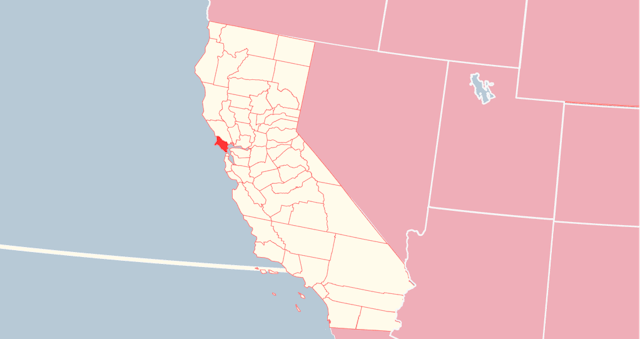Rehabs in Marin
Marin County is situated in the San Francisco Bay Area's northwest region in the U.S., California. There were 262,231 people there as of the 2020 Census. San Rafael serves as the area's seat.
Unfortunately, Marin faces problems like substance use and dependence. Despite the fact that many nations have dealt with the drug epidemic, the United States has steadily recorded the highest rates of addiction and drug-related deaths.
Anyone who needs assistance can find it at Marin County rehabs. The article will reveal info about them and the plans that will help you or your loved one to overcome dependence.
Rates
Like many other counties, this region of California is also impacted by substance abuse. Teen drug and alcohol use is prevalent in the area, and over the past 15 years, both the number of drug-related ER visits and fatalities have more than quadrupled.
Many individuals found it hard to access treatment in 2014 as a result of a countywide decline in the number of rehab clinics. In the 11th grade, almost 24% of Marin students admitted using prescription medicines casually, while 15% of 9th-grade students did the same. About 16 percent of 11th students admitted to using several substances at the same time.
According to the County Health Rankings, 110 drug-related deaths were reported in Marin County, alone in a single year. Other counties have reported even higher rates of drug mortality.
Detox Centers
The first step on your trip to recovery is detox. It can be difficult and stressful to undergo withdrawal. Along with the physical discomfort, psychological symptoms including worry, sadness, and anger can also exist. Willpower by itself frequently isn't sufficient to aid people in their efforts to abstain from substances. People frequently require ongoing support and prescription aid to get through.
Inpatient and Outpatient Plans
There are two types of care:
- Inpatient
- Outpatient
Both these two treatment regimens have a strong rehabilitation focus, but each modality has unique benefits and qualities as well.
A residential recovery plan usually is developed to handle more severe addictions. Intensive outpatient ones, however, are the best options for healing alcohol use disorders. Also, they are the best for other drug use disorders that are mild to moderate.
Inpatient care
Programs for residential rehabilitation typically 30 to 90 days. The average period of short-term addiction recovery is 27 days, according to SAMHSA data.
The severity of your dependence will determine how long you stay. Also, it depends on factors like your addiction's severity, any co-occurring mental health conditions, etc.
You become a full-time resident for the course of the project after you check into an inpatient care center for recovery. Seven days a week, targeted attention and help are provided.
Here you stay alone in a room or you have a roommate allocated to you. Meals will be served to you at the rehab facility.
Outpatient Care
An outpatient treatment clinic is very beneficial for those who are serious about stopping opioid use but only have a minor substance addiction issue. While recovering, they provide people the freedom to keep working and taking care of their families. This plan costs cheaper than a residential one. It is because you don’t have to pay for the room and the staff.
PHP
People learn that a partial hospitalization program offers full-time treatment when they first learn about it. They often ask how it differs from an inpatient program as a result. There are big differences between a PHP and a residential program. It is much like variations between detox, sobriety, and rehab.
The therapy regimen for partial hospitalization, however, operates quite differently. In actuality, during this program, no one lives on campus. Instead, they spend hours at a time in therapy and therapy courses at the rehab facility. They go back to their actual home when they are not receiving therapy.

